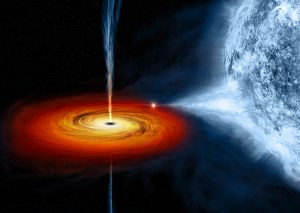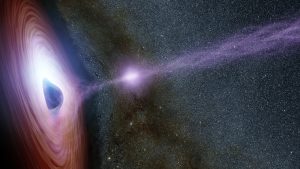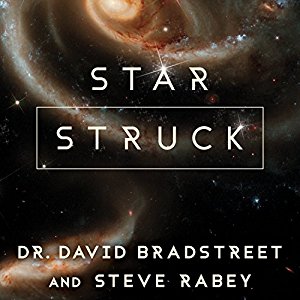There have been some disturbing reports lately of crude behavior in outer space. Black holes are burping.

The black hole Cygnus X-1 (left) is located near large active regions of star formation in the Milky Way, as seen in this image that spans some 700 light years across. The artist’s illustration on the right depicts what astronomers think is happening within the Cygnus X-1 system. (NASA)
In the past, astronomers heard black holes singing. Now the sounds are more digestive.
As David Bradstreet and I explain in our new book, Star Struck:
Black holes—so far as we know—are celestial phenomena (possibly the remains of dying stars) that compress vast amounts of matter and energy into a very small space, unleashing gravitational forces so strong that they suck in everything nearby, including light waves, which explains why they’re so black.
Some people describe black holes as giant vacuum clean- ers that travel around sucking up planets and energy like so much space dust. It’s probably more accurate to describe them as big, galactic bathtub drains. Open your bathtub drain and you can see the dirty water swirling around and going down.
It’s similar with black holes, except we never see the drain itself, only space stuff swirling around and disappearing. We can’t tell where everything is going, nor do we know if the standard laws of physics apply within their mysterious boundaries.
The burping was reported by NASA and covered in a recent Forbes article, ” Black Holes Burp Cosmic Radiation After Devouring Stars:”
NASA astronomers have gained new insight into the enormous flares from stars being chewed up by supermassive black holes.
Everyone now knows that black holes belch fire when they chow down on stars, as a number of these rare events have been captured by space telescopes in the last few years.
But TIME disagrees, in this article: “No, Black Holes Can’t ‘Burp.’ But What They Do Instead Is Important.”
They can burp. Sort of. OK, let’s back up.
The TIME article says what sounds like burping may result from “spaghettification” of stars:
… which is just what it sounds like—an annihilation that takes the form of the star being torn into long stands before being swallowed up.
As spaghettification happens, it leads to what the researchers describe as a “sudden injection of gas close to the black hole horizon.” That is an injection toward the hole from the star, not the other way around. The injection leads to brilliant flares of light—still far away enough from the hole that they can escape. The light is then absorbed by dust particles a few trillion miles from the black hole, which re-emit the energy in the infrared.

In 2003, NASA detected massive sound waves speeding away from a supermassive black hole in the Perseus cluster of galaxies. As Dave and I wrote:
Translated into a musical note, these sound waves were the equivalent of a B flat that’s fifty-seven octaves below middle C on the typical seven-octave piano. Humans can’t actually hear these sound waves, which are a billion times lower than the sounds our ears can pick up, but our instruments can detect them, declaring the Perseus song the deepest note ever received from space.
“The Perseus sound waves are much more than just an interesting form of black hole acoustics,” said researcher Steve Allen of the Institute of Astronomy in an article on NASA’s Science News website. “These sound waves may be the key in figuring out how galaxy clusters, the largest structures in the Universe, grow.”
You may not be able to hear black holes, but you CAN hear the audio version of Star Struck.
